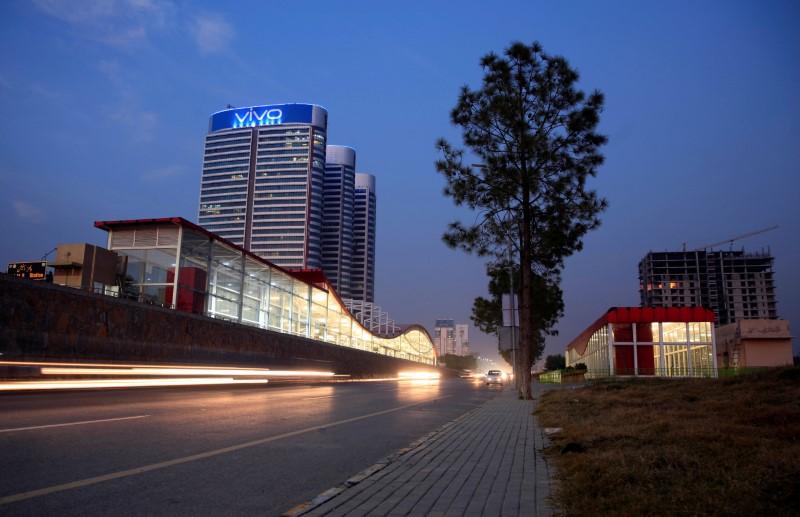
One, the 12 pillars and their components have been revised to reflect the changing contours of competitiveness. Two, a scorecard, ranging from 0 to 100, has been introduced for an economy’s overall ranking as well as its ranking on specific pillars and their components. The revised GCI has been named GCI 4.0 after the fourth industrial revolution.
Before we look at Pakistan’s latest GCI ranking, it may also be mentioned that the broad categories into which the 12 pillars are classified have also been revised. Previously, the 12 pillars were classified into three categories, namely, basic requirements, efficiency enhancers, and innovation and sophistication factors.
The four broad categories, which make up the GCI 4.0, are enabling environment (institutions, infrastructure, ICT adoption and macroeconomic stability); human capital (health and skills); markets (product market, labour market, financial system and market size); and innovation ecosystem (business dynamism and innovation capability).
With a total score of 51.1 out of 100, Pakistan has been ranked 107 out of 140 economies. In the last GCI edition (2017-18), based on the old index, Pakistan was ranked 115 out of 135 economies.
However, on the basis of GCI 4.0, Pakistan’s last year ranking has been revised to 106. This shows that the country’s ranking has gone down one position.
Pakistan scored its best ever GCI ranking of 92 in 2007-08. Its current GCI position is the second lowest in South Asia among the reported countries - India (58), Sri Lanka (85), Bangladesh (103) and Nepal (109).
Of the 12 pillars, Pakistan’s ranking is the highest on market size, which is 31. Market size means not only the domestic market but foreign markets as well to which a country’s businesses have access.
This is followed by business dynamism (67), innovation capability (75), financial system (89), infrastructure (93), macroeconomic stability (103), institutions (109), health (109), labour market efficiency (121), product market efficiency (122), skills (125) and ICT adoption (127).
Pakistan has the highest score on market size (70.7) as well, followed by macroeconomic stability (69.6), business dynamism (59.1), infrastructure (59), health (58.2), financial system (54.1), labour market efficiency (49.7), product market efficiency (47.9), institutions (46.3), skills (39.9), innovation capability (34.9) and ICT adoption (23.6).
Out of these, only on three pillars Pakistan’s score is better than the average score of South Asia. These are market size, product market efficiency and business dynamism, where average South Asia score is 66.9, 47.3 and 56.5 respectively.
Pakistan’s average ranking and score on the enabling environment category are 108 and 49.6 respectively. Under the human capital category, Pakistan’s average ranking and score are 117 and 49 respectively. In the markets category, the average ranking and score are 110 and 50.5 respectively. In the innovation category, the average ranking and score are 71 and 47 respectively.
This shows that on average Pakistan’s ranking is the lowest in the human capital category, while it is the highest in the innovation category. Likewise, on average, Pakistan’s score is the lowest in the innovation category, while it is the highest in the markets category because of the market size.
On the whole, the data indicates that principal constraints to Pakistan’s competitiveness are related to the supply side, such as lack of skills and health facilities, weak institutions, lack of ICT adoption and product and labour market inefficiency.
Demand side
On the other hand, Pakistan’s score and ranking are pretty good for the market size, which is a demand-side factor.
Institutions comprise not only the legal and policy framework but the government’s attitude towards economic and business affairs as well. In 2007-08, Pakistan’s ranking on the institutions was 81, far better than the present ranking of 109.
The most obvious problem associated with the institutional framework is the high economic cost of terrorism, on which Pakistan is placed globally at 140, followed by organised crime (121) and quality of land administration (117).
Regarding ICT adoption, the major problem is the number of internet users as a percentage of total population, which is 15%. On human capital development, the major issues are average school life expectancy (8.6 years), pupil-to-teacher ratio in primary education (47.6%), average life expectancy (58.6 years) and poor quality of vocational training.
Relatively high import tariffs (16.8% on average) and inefficient Customs clearance are major obstacles to the product market efficiency, while low female participation in the labour force (0.17%), labour-employee relations, high redundancy costs and unsatisfactory protection of worker rights constitute major hindrances to the labour market efficiency.
Therefore, there is a need to develop competitive product and labour markets, encourage greater female participation in the workforce, build credible institutions of economic governance, shore up human capital development and promote the use of ICT by businesses.
The writer is an Islamabad-based columnist
Published in The Express Tribune, November 19th, 2018.
Like Business on Facebook, follow @TribuneBiz on Twitter to stay informed and join in the conversation.








































COMMENTS (1)
Comments are moderated and generally will be posted if they are on-topic and not abusive.
For more information, please see our Comments FAQ